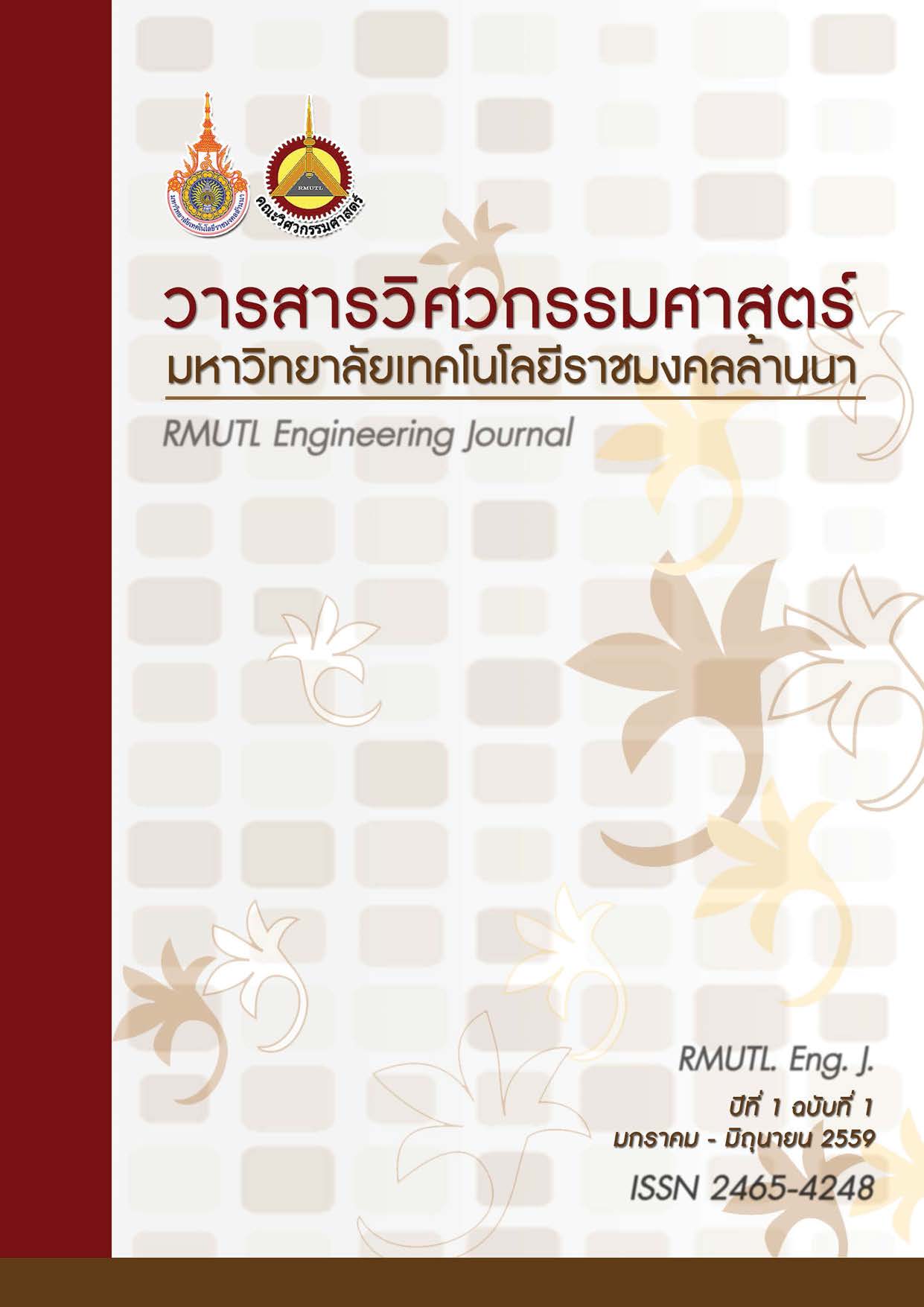Low-Frequency RFID Reader Antenna for Conveyor Belt Applications
Keywords:
Low-Frequency RFID, Near-Field RFID, Spiral loop antennaAbstract
This paper presents the spiral loop antenna for low-frequency RFID for conveyor belt applications. The structure of proposed antenna can generate the magnetic field distribution of in each principal component (Hx-, Hy-, and Hzcomponent)
to enhance the communication distance in all principal directions. The overall size of proposed antenna is 55 × 60 cm. The antenna was fabricated with 24 AWG copper wire and fed by BNC-connector. The numerical electromagnetics code (NEC) is employed to analyze the magnetic field distribution and communication performance in each principal component. The antenna prototype was fabricated to confirm the communication performance between reader and tag. From measured results, the spiral antenna has the maximum reading rangeof 40 cm in all principal directions (x-, y-, and z-direction). The percentage of surface equal to 76.34% in x-direction,98.96% in y-direction, and 67.56% in z-direction, respectively. For the measured results with conveyor belt applications, it is found that the maximum reading range are 25 cm in x-direction and 40 cm in y- and z-directions. The percentage of surface equal to 42.50%, 100%, and 95% in x-, y-, and z-directions, respectively.
References
2. Paret D. ( 2 00 5) . RFID and Contactless Smart Card Applications, John Wiley&Sons, New York.
3. AN678 RFID Coil Design, Statistic Data,URL:http://www.microchip.com, access on 11/10/2015
4. มาตรฐานทางเทคนิคของเครื่องโทรคมนาคมและอุปกรณ์เรื่องเครื่องวิทยุคมนาคมประเภท RadioFrequency Identification: RFID (กทช. มท. 1010 – 2550)
5. Cooney, E.M. (2006). The complete review of radio frequency identification, THOMSON DELMAR LEANING.
6. Cole, P.,Ranasinghe, D. and Jamali, B. (2003).Coupling Relations in RFID Systems II: Practical Performance Measurements, White paper,October 2003, pp.1-33.
7. RFID Coupling Techniques, Statistic Data,URL:http://www.radio-electronics.com, access on 11/10/2015
8. Nikitin, P.V., Rao, K. V. S.and Lazar, S. (2007).An overview of near field UHF RFID, in Proceedings of the IEEE International Conference on RFID 2007, Grapevine, Tex,USA, March 2007, pp. 166–174.
9. วิวัฒน์ ชวนะนิกุล อรรณพ สุริยสมบูรณ์ มนกานต์ อินทรก่าแหง และวุฒิชัย กลมเกลียว (2551), รูปแบบการจัดการฟาร์มอัตโนมัติด้วยเทคโนโลยี RFID, ศูนย์เทคโนโลยีอิเล็กทรอนิกส์และคอมพิวเตอร์แห่งชาติ ส่านักงานพัฒนาวิทยาศาสตร์และเทคโนโลยีแห่งชาติ
10. ดนัย ต.รุ่งเรือง ชูวงค์ พงศ์เจริญพาณิชย์ ไพโรจน์ วุ่นชุม และคณะ (2549), การออกแบบสายอากาศ RFID ส่าหรับระบบลงทะเบียนสัตว์, รายงานการวิจัยพัฒนา และวิศวกรรมฉบับสมบูรณ์, ศูนย์เทคโนโลยีอิเล็กทรอนิกส์และคอมพิวเตอร์แห่งชาติ ส่านักงานพัฒนาวิทยาศาสตร์และเทคโนโลยีแห่งชาติ
11. ดนัย ต.รุ่งเรือง ชูวงค์ พงศ์เจริญพาณิชย์ ศุภกิต แก้วดวงตา และคณะ (2551), การเพิ่มประสิทธิภาพของสายอากาศRFID ส่าหรับระบบลงทะเบียนสัตว์,รายงานการวิจัยพัฒนาและวิศวกรรมฉบับสมบูรณ์,ศูนย์เทคโนโลยีอิเล็กทรอนิกส์และคอมพิวเตอร์แห่งชาติ ส่านักงานพัฒนาวิทยาศาสตร์และเทคโนโลยีแห่งชาติ
12. Balanis, C. A. (1997). Antenna theory: analysis and design, John Wiley & Sons, New York.
13. NEC2 Software, Statistic Data, URL:http://4nec2.software.informer.com
14. Kawdungta, S., Phongcharoenpanich, C. and Torrungrueng, D. (2010). Design of a Novel Dual-Loop Gate Antenna for Radio Frequency Identification (RFID) Systems at Low FrequencyBand, Progress In Electromagnetics Research C, vol. 12, pp. 1-14.










